
















PRESIDENT, Dr Irfan Ali on Thursday offered some 200 acres of land in Guyana to India for the exclusive production of millets here.
The Head of State extended this concession to India in honour of the United Nations declaring 2023 as the International Year of Millet (IYOM).
Millets are a group of small-seeded grasses grown around the world as cereal. The grains are usually ground to a flour to make various foods.
According to a press release, President Ali made the offer to Union Agriculture and Farmers Welfare Minister, Shri Narendra Singh Tomar in New Delhi, India.
At this meeting, Dr Ali asked the Indian Minister to send a team of experts to set up millets farms in Guyana and vowed that assistance will be provided in the production and promotion of the grain in the Caribbean and Latin America.
The President noted that the upcoming Caribbean Community (CARICOM) Heads of Government conference set for February this year, would be a good opportunity for Prime Minister Shri Narendra Modi to present India’s vision on Agriculture and Food Security.
Additionally, he said even a virtual address from the Prime Minister
to the Caribbean heads would go a long way in promoting and popularising millets in the Caribbean Community.

Along with this, President Ali also extended an invitation to Shri Tomar to visit Guyana and deliver the keynote speech at the CARICOM Agriculture forum slated for August 2023.
Meanwhile, during the

same meeting, the Head of State remarked that Guyana, recognising the achievements of India in the agricultural sector, is seeking the technology and skilled manpower in the sector to further push Guyana as a leader in agriculture and agro-processing in the Caribbean.

Dr Ali went on to note that while Guyana has arable lands, freshwater and the right climatic conditions for agriculture, productivity is hindered by the lack of technology and human-resource capacity.
He also sought Advanced Irrigation Techniques and Irrigation Pumps from India, as Guyana is below sea level. The President said
India can help Guyana to set up climate-resilient and higher yield seed production of important crops such as sugarcane and coconuts, among other things.
In addition to this, the Head of State mentioned that Guyana is ready to facilitate joint ventures for the dairy sector to India and Guyana’s private sector for exporting dairy products to the United States and other neighbouring countries.
Subsequently, an agreement was reached that a Memorandum of Understanding (MoU) will be executed in one month, in which the Government of India has agreed to offer technological support and human-resource skills and capacity-building in four areas, namely, coconuts, rice, sugar and dairy
Shri Tomar said there is great potential for cooperation in agriculture and agro-processing between the two countries, noting that India, which has one of the world’s largest research and development systems in agriculture, would be happy to share its expertise.
He related that the IYOM 2023 will provide an opportunity to increase global production, efficient processing and better use of crop rotation and promote millets as a major component of the food basket.
The minister went on to say that his ministry in India is working to increase millet production and consumption in collaboration with other central ministries, state governments and other stakeholder organisations.
He related that millets provide an alternative food system, especially in times of increasing demand for vegetarian foods, noting that it contributes to a balanced diet.
Further, millets are a rich source of minerals such as calcium, iron, zinc, phosphorus, magnesium, and potassium. It also contains appreciable amounts of dietary fibre and vitamins such as folic acid, vitamin B6, ?- Carotene, and niacin.

AS Guyanese continue to anticipate what will be unveiled in Budget 2023, which is scheduled to be presented before the National Assembly on Monday, Vice-President, Bharrat Jagdeo, affirmed that citizens could expect measures consistent with the framework and goals that the People’s Progressive Party/Civic (PPP/C) Government administration established very early on.

In an interview hosted by Travis Bruce, Dr. Jagdeo, on Friday, speaking broadly on what Guyanese can expect from Budget 2023, related that the PPP/C Government has a predictable and clear strategy that has been about consistency over newness.
“There’s consistency in every budget and that is needed in economic policy making. This budget is not a PR document, it is a policy document with resources to support the goals that we have outlined through our national development strategy or our manifesto.
“So, some people look for newness all the time, but it’s more a solid, sturdy, foundation type budget that moves us forward, that pays particular attention to all resources and how we utilise them to create the conditions of future growth,” the Vice-President said.
According to Jagdeo, given Guyana’s promising economic future due to its oil and gas industry, now more than ever, the country needs predictable policy making in economics, to set the conditions for the resumption
of dynamic economic activities.
“This country has a great economic future, but that economic future is not a given. It could easily be eroded by a fickle government, a government that is not clear on what it wants to achieve and that is why we said we are not going to be anecdotal and convenient. This is what differentiates us in the PPP from the other parties, being stable, and predictable. That’s important for investors. But being stable and predictable does not mean me being a pushover,” Jagdeo said.
He was firm that this year’s budget will not be one that is big on rhetoric, but more so one that has a core set of ideas that build on the achievements of strategic goals that cover several areas including economic development, social development, support for infrastructure, housing development, security and state-of-the-art services in healthcare and education.
“These are all supported through various initiatives in the bud-
get,” the Vice-President said.
Jagdeo related that even without getting into specifics, there will be several predictable items in the budget that aligns with moving towards promises that the government has made.
Notable examples include welfare programmes such as the “Because We Care” cash grant which the government has pledged to incrementally increase to $50,000 and the old age pension which is to be incrementally increased until it is doubled what it was in 2020.
“So, we have to continue all of these things. They’re not many new things in the budget but there are important things to achieving the goals of the future. That is how we have approached it,” Jagdeo said.
This year’s budget will see a balance between addressing the immediate needs of people, helping them now, but also planning for the future with a focus on improving the lives of all Guyana socially, economically,
and culturally.
“The budget, every year, just brings us closer to achieving those goals. If you trace the evolution of budget and our economic history, you will see how far we have come and how much closer to achievement of those goals we are today. Every single budget of a PPP/C administration, there’s one thing that underlines all of the budgets, it’s that people can rest assured that it is not going to be hardship budget,” Jagdeo said.
Through the government’s policies, the business environment has changed radically.
“That’s why you have seen in almost every sector, greater levels of investment. If you look at the credit to the private sector and the borrowing of the bank for economic activities, it has increased tremendously. That signifies greater confidence in the economy and confidence in the direction in which we’re going. We’ve created the right environment to allow people to create jobs and to create greater
income for themselves, and employment opportunities,” he said.

Dr. Jagdeo also pointed to the work that the government has done to reduce job loss, and increase disposable income ensuring that citizens, particularly vulnerable groups, receive more support.
Other areas where persons can predictably expect to see massive spending includes the housing sector, and in agriculture.
“In this year’s budget, we have another massive allocation to develop maybe another 20,000 house lots. Because we promised some 50,000 house lots, and we will have to overshoot to meet the demand that we have,” Jagdeo said.
He added: “There’s also lots of support in the budget for agriculture, because we take this seriously, with the involvement of young people in agriculture
and the technology. But this is not anything spectacularly new.”
On the climate side, the budget will also see measures that focus heavily on adaptation to climate change, particularly through the utilisation of funds garnered from Guyana’s sale of its first carbon credits last year.
“Our biggest vulnerability is flooding from unusual rainfall. So, greater attention will be spent on putting in the structure and the policies and the capacity in place. Especially in the farmlands and so on. We suffer huge losses every year because of climate change and the heavy amount of rainfall we’ve had. So, this year’s budget will also support that area strongly,” Vice-President Jagdeo said.

PUBLIC Works Minister Bishop Juan Edghill has assured Mara residents that they remain part of the government’s development agenda.
somewhere, understand that development comes in phases.”
VICE-President Bharrat Jagdeo will be leading a technical team to India to advance discussions with officials there on future co-operation in oil and gas initiatives.

This was announced following a meeting between President, Dr. Irfaan Ali, who is in India on an official visit, and the Minister of Petroleum

and Natural Gas and Housing & Urban Affairs, Shri Hardeep S. Puri, on Friday.
According to information from the Government of India, the discussion were centered on co-operation across the entire “oil and gas ecosystem.”
Leaders, according to the report, further agreed on
direct government-to-government co-operation across the entire spectrum of the oil and gas sector including increased long-term offtake, participation in exploration and production activities in Guyana, and technical co-operation in the midstream and downstream sector and capacity building.
Dr. Ali and Minister Puri also witnessed the signing of a contract between the Guyana Power and Gas Inc. and Engineers India Limited (EIL) for providing Consultancy Services for the Integrated NGL Plant and 300 MW CCGT Power Plant project in Guyana.
The reassurance was given during a community meeting at the Mara Farmer’s Association on Thursday. Minister Edghill engaged the Region Six residents about the upcoming projects and addressed their concerns.
He drew attention to the $100 million expended to improve roadways in the area, in keeping with the commitment made by President, Dr Mohamed Irfaan Ali in 2021.
The President had committed to investing $100 million to construct six kilometres of asphaltic road in Mara. Minister Edghill announced that 2023 will see another kilometre of road being rehabilitated in the community.
Further, to ensure that the road remains accessible, he noted that the strategy of sectional repairs coupled with construction will continue.
The minister said: “When the government intervenes, it must bring joy to people. I must assure you, that your turn is next. Every time you see development happening
The project began in March 2022. It was executed by the Ministry’s Special Projects Unit, and saw four miles of road rehabilitation being done, stretching from Germania to Kaiwa.
Meanwhile, the residents lauded the government’s interventions so far, with many expressing excitement over the future.
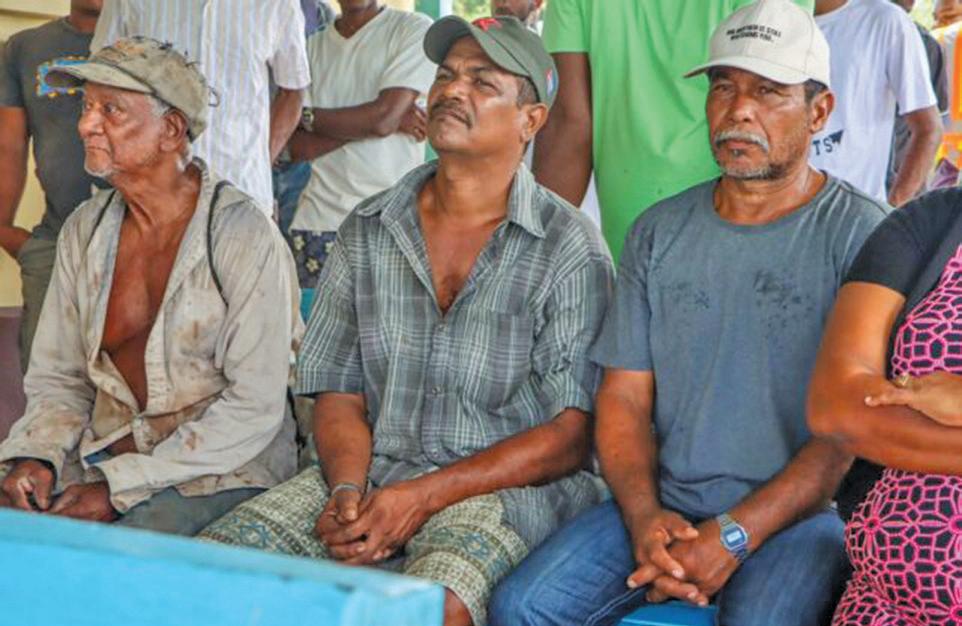
One resident reflected on the previous condition of the road, explaining that the rehabilitation was long overdue.

He said, “We thank this government for everything they have done. Last time, they formed a group of five persons and within two weeks we have engineers here from Georgetown. The action was taken very quickly. I feel happy that this government has done a good job. “
Another resident, Deodat Perso, expressed, “We’re satisfied with their work right now. We’ve been waiting for years and now we’re seeing things being done in the community so we have to thank the government for the good work and we hope these good works continue.” (DPI)
PREVAILING retail prices as projected by the Guyana Marketing Corporation (GMC) for the period January 11 to 23, 2023, indicate that non-traditional agricultural commodities remain stable at all major markets across the country.



The GMC carried out checks at Kumaka, Anna Regina, Parika, Vreed-enHoop, Diamond, Stabroek, Bourda, Mon Repos, and Skeldon municipal markets.
Price checks on the average market price for a bundle of bora saw a drop of almost 32 per cent, while other fresh produce such as cucumber, pak choi, and lettuce were noticeably reduced.
Staple produce such as cassava, eddoes, plantains, potatoes, and yams remain unchanged, or have been reduced significantly at the markets.
The corporation also confirmed that the prices for chicken, beef and mutton were reduced by seven per cent and are readily available countrywide.
Notably, vegetables such as boulanger, cabbage, ochro, and pumpkin have remained under $500 per parcel and/or lb respectively.

Meanwhile, Guyanese can look forward to the continuation of this stable trend as farmers encounter more favourable weather conditions in the coming months, which is expected to incentivise increased
production.
In 2022, food production received some G$38 billion which saw an increase in climate-smart agriculture as well as an increase in agro-processing facilities and training.
These innovations will increase the availability and shelf life of local produce, while food production in Guyana will continue to see further investments in 2023 that
will improve overall productivity within the sector.
Moreover, food security continues to be a paramount policy initiative for the Government of Guyana, which holds lead responsibility for agriculture, agricultural diversification, and food security in CARICOM –spearheading the regional body’s quest to reduce its food- import bill by 25 per cent by 2025. (DPI)
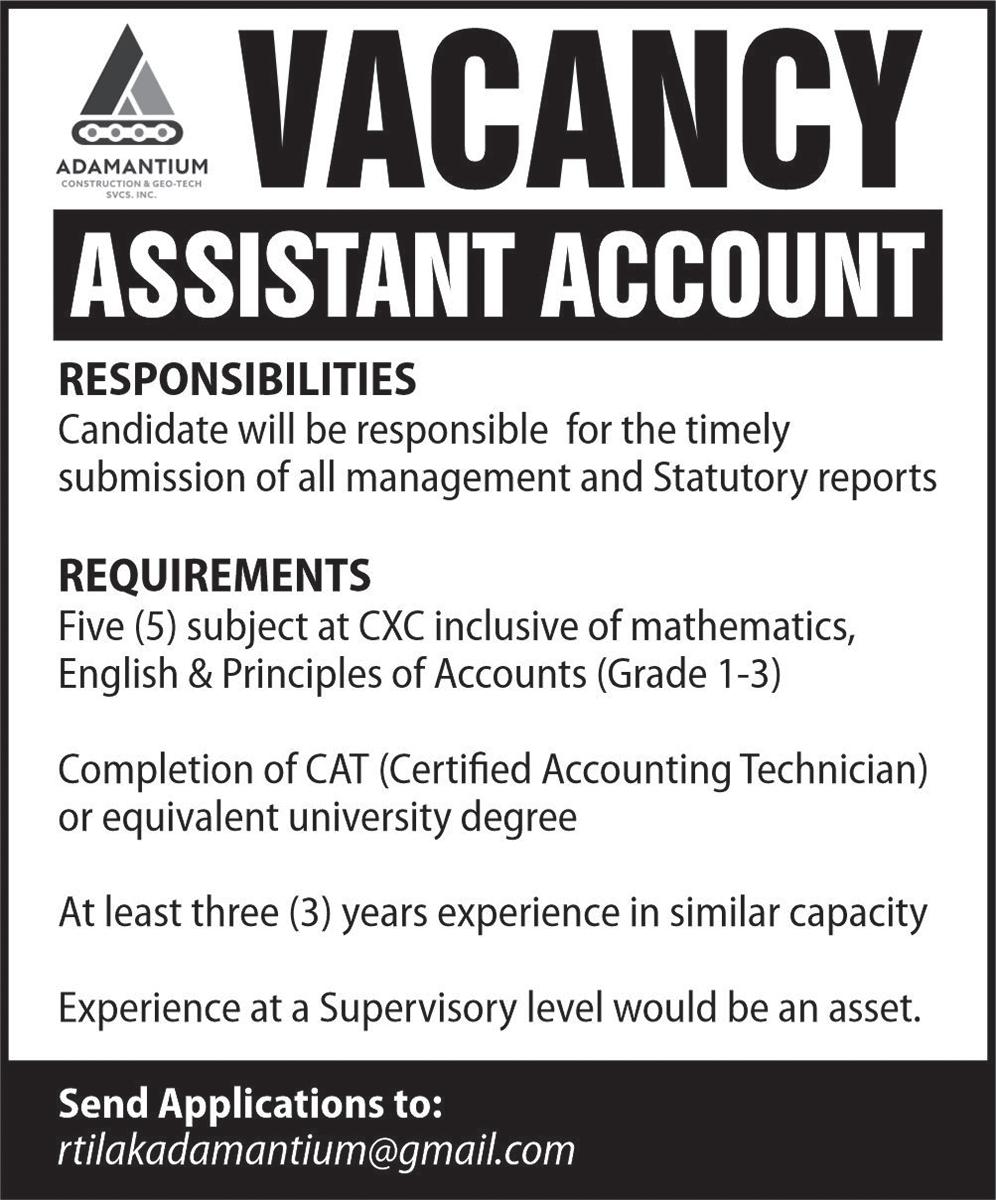
THE relationship between India and Guyana ever since the independence of Guyana in May 1966, has been close and cordial with a high degree of understanding.
The warmth in the relationship remains unaffected over the decades, and this was further cemented recently when President, Dr Mohamed Irfaan Ali offered 200 acres of land in Guyana for the exclusive production of millets in honour of the United Nations declaring the year 2023 as the International Year of Millet (IYOM).
Dr Irfaan Ali also extended an invitation to India’s Prime Minister Narendra Modi to address the Heads of Government of the Caribbean Community (CARICOM) scheduled for
February 2023, to give India’s vision on Agriculture and Food Security.
President Ali, who is CARICOM’s Head of the Sub-Committee on Agriculture and Food Security, has also extended an invitation to Union Agriculture and Farmers Welfare Minister, Shri Narendra Singh Tomar, to visit Guyana and deliver the keynote speech at CARICOM’s Agri Forum scheduled for August 2023.
Union Agriculture and Farmers Welfare Minister Shri Tomar noted that the International Year of Millets (IYOM) – 2023 would provide an opportunity to increase global production, efficient processing and better use of crop rotation, and promote millets as a major component of the food basket.
Millets provide an alternative food system in times of increasing demand for vegetarian foods, as it contributes to a balanced diet and a safe environment. Asia and Africa are the primary production and consumption centres of millet crops, particularly India, Sudan, and Nigeria are the major producers of millet.
Millets were the first crops cultivated in Asia and Africa, later spreading as an essential food source for advanced civilizations worldwide.
President Ali noted that the two countries share a common heritage and values, while emphasizing the need to strengthen bilateral relations as Guyana is poised for rapid growth and development.
India has offered
credit facilities to Guyana for use in mutually accepted designated fields, agriculture and information technology being two of these.
Indian companies have also expressed interest in biofuel, energy, minerals and pharmaceuticals.
The Government of India has helped the Government of Guyana complete the following projects: the National Cricket Stadium, supply and installation of 50 solar traffic lights, and procuring drainage pumps.
India is also assisting in setting up a Centre of Excellence in Information Technology (CEIT).
Other projects include assistance with the ocean-going vessel/passenger ferry, construction of East Bank East-Coast road linkage, acquisi -
tion of fixed and mobile pumps and associated structures and spares, the upgrading of three regional hospitals, ricehusk gasifier and assistance for quick-impact community development projects.
Further, the love for cricket is another area that binds the two countries intimately.
Guyana is home to a number of Indian-origin people who went to the Caribbean islands many years ago, and India has been an ally of Guyana since the first democratic election in 1992.
India’s GDP is expected to reach US$5trillion by 2025 and achieve upper-middle income status on the back of digitization, globalization, favourable demographics, and reforms.
India is also focusing
on renewable sources to generate energy. It is planning to achieve 40 per cent of its energy from non-fossil sources by 2030, which is currently 30 per cent, and increase its renewable energy capacity from to 175 gigawatts (GW) in 2022.
India is expected to be the third largest consumer economy as its consumption may triple to US$4trillion by 2025, owing to a shift in consumer behaviour and expenditure pattern, according to a Boston Consulting Group (BCG) report.
It is estimated to surpass USA to become the second-largest economy in terms of purchasing power parity (PPP) by 2040, per PricewaterhouseCoopers’s report.
Dear Editor,

I THINK we all should reflect on the past to better the future. Therefore, I will like to look back a little on budget 2022 and what it has done for us as Guyanese within that year. I must also clearly state that budget 2022 was a peoplefriendly budget and saw all Guyanese benefitting from it including the former government officials and President. So, the 2022 budget was a budget for all Guyanese.
With that being said, the 2022 budget has transformed the livelihood of many Guyanese in one way or another. We saw major developmental works taking place throughout Guyana and in all sec-
tors. Our pensioners saw growth in their pensions, public assistance was raised and the social services to our people were better than before.
We saw a massive transformation in Guyana’s landscape and infrastructure. Roads are being expanded and built to accommodate the growing number of vehicles on our highways.
Community roads and streets are being done throughout Guyana. There was a major breakthrough in moving closer to having a new Demerara Harbour Bridge, betters street and highway lightings, among many other things.
In the year 2022, we saw better for our children
through the MOE children’s school grants, feeding programmes, and better examination results. We saw a major improvement in the school welfare system and better in its environs, etc…
In the agriculture sector, we saw massive transformation as hundreds of new cash crop farmers returned to their land, rice farmers started to invest more, fisherfolks were cared for, new crops were cultivated, and many farm-to-market roads are being done so as to recreate better access to and from farmlands.

Agro-processing plants are being placed in some regions, machines are being given to various agencies to better serve in helping the
farmers, among other things.
In sports, we saw great changes and more investments in our young people. We saw the upgrading of playgrounds, small tractors being given to weed the ground, sports gear being handed out, along with many other equipment that is needed to keep the grounds in order.
We saw the first ever “One Guyana” football tournament that saw all regions in Guyana taking part and we had the opportunity to host CPL.
In 2022, the health sector was transformed from that year’s budget with more additional healthcare services and staff. Health facilities are being upgraded and train-
ing is done to better the services provided.
We saw better wages and salaries for our public servants, although many are saying that’s not enough. But it was a major boost to their pocket, along with better working conditions.
In the housing sector, we saw massive growth, as thousands of Guyanese were given land for the first time. Many single parents and young professionals benefitted from the same. All across Guyana, the entire housing sector advanced rapidly. We saw houses being built and many, for the first time, owning their homes.
I can go on and on and speak of the many grants that were given to our people, but
I won’t because that’s just a little recap of budget 2022 and what it has done for all Guyanese.
Brothers and sisters, I won’t go further, but to say that I am very confident that Budget 2023 will be bigger and better so that all of Guyana can once more see major development and bigger benefits.
I wish the Senior Minister in the Office of the President with responsibility for Finance, Hon. Dr. Ashni Singh all the best in presenting Budget 2023, as together we continue to grow as “One Guyana.”
Dear Editor,
IN Nigel Hughes’ so-called study, the learned attorney contended that Region Four, being the capital of Guyana and the most populous region representing 41 per cent of the population who reside in this region, and which is predominantly Afro-Guyanese, is being discriminated against by the government.
To this end, Nigel sought to compare and contrast Region Four’s capital budget allocation with two predominantly Indo-Guyanese regions, namely, Regions Three and Six.
In Budget 2022, the capital allocation to Region Three was $898 million, Region Four - $782 million, and Region Six - $962.5 million.
First and foremost, it is worth noting that a careful examination of the regional capital budgets across all 10 administrative regions revealed that the capital budgetary allocation at this level is limited to under one billion dollars.
This means that capital expenditure exceeding one billion dollars is channeled through the central government apparatus.
Consequently, the methodology employed in the study conducted by Nigel Hughes and his team is deeply flawed because the findings of their analysis did not present in a true sense, the full picture regarding the allocation of public financial resources across the 10 administrative regions.
In this regard, Nigel Hughes’ analysis also ignored the unique development needs of each region, the population density, socio-economic structure, geographic dispensation, and the size of each region in terms of square kilometres (Km2).
ministrative region with only 2,232 Km2 and the highest population density of 140 persons per Km2. As such, the capital allocation for Region Four per Km2 represents $350,000 per Km2.
Region Six is the third largest Administrative Region of the ten regions, with a low population density of three persons per Km2 and the lowest capital allocation per Km2 relative to Region Four (Region Four was allocated 13 times more per Km2), given that the capital allocation for Region Six represents $27,000 per Km2.
Of note, the population density of Region Four is five times the population density of Region Three and 47 times the population density of Region Six. Also, Region Three is 1.7 times larger than Region Four and Region Six is 16 times larger than Region Four in terms of square kilometres.
In light of the foregoing analysis, the budgetary allocation in 2022 for capital projects for Region Four is the highest per Km2 considering as well that Region Four has the highest population density relative to all the other Administrative Regions.
To interpret this analysis differently from a layman’s perspective, the size of each region is an important factor because infrastructure development such as road, land development, building, water transport, bridges, agriculture development, equipment for health and education (hospitals and schools)–obviously, the size (square kilometer) has to do with distance coupled with the logistics of each region, these altogether will have cost implications.
So, for instance, the Ministry of Public Works infrastructure budget for 2022 was over $80 billion for roads and bridges across the 10 administrative regions.
The four-lane highway from Eccles to Mandela Avenue, Sheriff Street-Mandela Avenue Road network and other new four lane highway roads, which in turn, will open up new lands for commercial, industrial, and residential development in Region Four, would need to be considered in the analysis to understand the total allocation of public financial resources for capital works the region.
These allocations are not reflected in the regional budgets. Similarly, the Ministry of Housing’s budget in 2022 was about $12 billion which included development for Region Four that was excluded in the Nigel Hughes study.
In fact, the entire capital budget for the country through all of the various ministries and agencies do have allocation of capital resources that when expended, will cut across all the regions.
With these in mind, taking the total allocation into account–that is, the regional budgets (which is limited to under one billion for all of the administrative regions) and the central government budget, the total capital allocation for the regions will amount to millions of dollars per Km2 versus thousands of dollars per Km2 as demonstrated above using the regional allocations only.
To demonstrate this point, the capital budget for two major road projects alone in Region Four amounted to about $16 billion, which would translate to $7.6 million per Km2.
One has to also bear in mind that the total capital budget for Region Four will, in fact, be much higher when the capital allocation for all the other sectors is included–such as for physical and social infrastructure especially in the public health and education sectors.
In the final analysis, contrary to the views presented by Nigel Hughes in his so-called study, which is now proven to be profoundly flawed, there is no evidence of discrimination or marginalisation by the government in the manner in which public financial resources are allocated regionally and nationally.
Yours faithfully, Joel BhagwandinThe table shows the regional population, capital allocation, population, population density and size in terms of Km2.
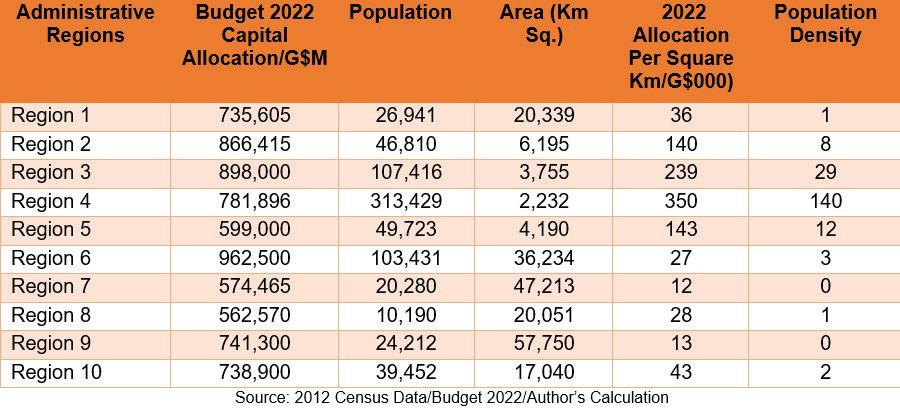
Region Three, which has a population density of 29 persons per Km2 with a size of 3,755 Km2, the capital allocation of $898 million represents $239,000 per Km2.
Region Four, on the other hand, is the smallest ad-


Another crucial point I wish to highlight is that the budgetary allocation for capital expenditure across the ten Administrative Regions are not only the regional allocation, but also allocation through the central government budgets at the ministry level as mentioned earlier.

BUDGET 2023, according to Senior Minister with Responsibility for Finance, Dr Ashni Singh, will continue to deliver on the things that are necessary to improve the lives of all Guyanese.
Dr Singh, during an interview on Friday, said that the budget will constitute another instalment through which the People’s Progressive Party/Civic ( PPP/C) government led by President, Dr Irfaan Ali, will continue to improve the lives of all Guyanese people within the context of the President’s philosophy of One Guyana.
“… the oneness of our country… [it is] the fact that we’re all united around the common cause of advancing and developing our country, and the fact that people start participating and benefitting from the incredibly exciting transformation that is taking place, and that even more so will continue to take place in the future in this beautiful country,” Minister Singh said.
He related that the manifesto itself is the subject of extensive consultation with stakeholders, and with the people of Guyana, and
formed the basis of review.
“It comprises the things that we committed to the people of Guyana, that we will deliver, and therefore guides all that we do as a government. The manifesto has, therefore, been translated into successive annual budgets aimed at delivering these manifesto commitments,” Dr Singh said.
Further, the budget also has the projected outcomes in the economy, macroeconomic outcomes such growth in the economy,
growth in the respective sectors and the updated fiscal framework: the revenues expenditure, and more.
“The budget process is also situated within a certain macroeconomic context. What is happening in the global economy? We have to constantly update ourselves on what is happening in the global economy because of course, Guyana is a part of the global economic system,” Minister Singh said.

He added that the global
economy has been going through extremely tumultuous times, not only as a result of COVID-19, but also the war in Ukraine and the lockdown associated with the COVID-19, which increased freight charges.
“Global inflationary pressures we’ve seen around the world, economies responding to emerging global inflationary pressures and trying to rein in inflation as a result of escalating fuel and food prices and so on… that has now
brought with it of course some element of recessionary risk,” Dr Singh said.
The government, however, as economic policymakers, has to constantly keep an eye on what is happening in the global economy, and how that will feed through multiple channels into the domestic economy.
To achieve this goal, the government remains constantly engaged with multiple stakeholders in society.


“…because we want not only to form our own, not only to be guided by our own perspectives on developments in the global economy and developments in the domestic economy, but importantly, we want to hear from other stakeholders in society, what their perspectives are, how they see things evolving, what are their main concerns, their main issues, what their perspectives are on key issues that are confronting us,” Dr Singh said.
He related that the government prides itself on the closeness of its engagement with stakeholders in society and added that they have an ongoing engagement with the private sector, the reli-
gious community, even the industrial sector and special interest groups.
“ The private sector of Guyana had been reeling from five years [2015-2020] of bad policy at a time when our economy should have been growing rapidly because we were gearing up for oil. We were growing at an extremely anaemic level and there was the non-oil economy [which] had almost disappeared… Agriculture had been deliberately neglected and was suffering the consequences [of] political vindictiveness by the APNU+AFC,” Dr Singh said.
He noted that one of the first tasks that the PPP/C faced when returning to office was the restoration of Guyana’s attractiveness as a destination for private investment, and the country’s status as a hospitable place in which to do business.
“We value the role of the private sector in creating jobs and in generating incomes, and we will work with the private sector to ensure that they continue to create more jobs for Guyanese people, and that they generate more incomes for guidance households,” Dr Singh said.
THE United Nations (UN) Food Systems Coordination Hub (the Hub) convened today a virtual dialogue between the Food Systems National Conveners and the Director-General of the Food and Agriculture Organization of the United Nations (FAO), QU Dongyu. Attended by over 200 participants, the dialogue welcomed Ministers for Agriculture and highlevel national officials.
“We can turn the tide through the transformation to more efficient, more inclusive, more resilient, and more sustainable agri-food systems,” Qu told representatives from around 100 countries.
The officials came together to share their efforts and ideas in planning and implementing their national pathways for agri-food systems transformation to reduce hunger, poverty, and food loss and waste, protect biodiversity and tackle climate change.
“To achieve the ambitious, transformative changes required, we need to change policies, mindsets, and business models, and each of you must take the lead in this,” the FAO DG underscored.
One year ago, the United Nations established the UN Food Systems Coordination Hub, which is hosted by FAO on behalf of the UN System and supported by the International Fund for Agricultural Development (IFAD), the World Health Organization (WHO), the World Food Program (WFP), the UN Environmental Programme (UNEP), and the United Nations De-
velopment Coordination Office (UNDCO).

The Hub’s primary role is to support countries to develop further and implement their national agri-food systems transformation pathways.
“FAO, together with partners, and all relevant stakeholders, is providing technical expertise and professional solutions to support these changes…and continues to lead efforts to support national transformation plans in a time of unprecedented challenges,” Qu explained.
The Director-General further informed participants that the Food Systems Stocktaking Moment (STM) will take place in July 2023. Together with regional preparatory meetings this year, this milestone event will provide opportunities to report on progress made at the national level since the UN Food Systems Summit in 2021.
The outcomes of the STM will be an important input to the Sustainable Development Goals Summit in September 2023.
“The historic task we are facing is clear: defining a holistic, coordinated approach to transform our agri-food systems,” he highlighted.
At the dialogue, dozens of National Conveners and officials responsible for leading the implementation of plans for agri-food systems transformation described priorities and actions that are delivering on the commitments made at the 2021 UN Food Summit.
They also outlined some of the challenges they face to transform their agri-food systems, such as the impacts of conflicts and climate
change, as well as access to food and agricultural inputs. Moreover, the leaders highlighted the importance of linking agri-food systems policies to solutions that help overcome the triple planetary challenges of climate change, biodiversity loss and pollution.
The FAO DG assured attendees that the Hub will continue to support these critical links by creating added value through the Organization’s knowledge, information, and technical expertise, with the support of the UN Agencies, while avoiding duplication of work.
Held during the annual UN General Assembly high-level week in New York in 2021, the UN Food Systems Summit closed with the tagline “From New York back to Rome”.
FAO is also using its flagship programmes – such as the Hand-inHand Initiative, the Investment Forum and the 1000 Digital Villages—as important mechanisms for accelerating the transformation of agrifood systems at the country level and mobilizing the required investment.
For Qu, the role of the Food Systems National Convenors is vital for the well-being of billions of people.
“Our agri-food systems are not delivering effectively. Conflicts, the climate crisis, and the pandemic, have aggravated the situation, increasing the number of hungry people, intensifying inequalities and jeopardizing progress made in the past decades,” he warned.
Qu underscored that transforming agri-food systems is a unique opportunity to achieve re-
sults at scale, in line with national priorities, while addressing the impacts of the climate crisis.
“Leveraging finance for agri-food systems transformations is one of the most catalytic actions needed for achieving the SDGs - if we get it right, our agri-food systems can be profitable, equitable, sustainable, healthy, and more resilient to shocks”,
he explained, adding that it is also necessary to invest in science, innovation, and technology.
Finally, the FAO DG reminded participants that the effective implementation of National Pathways—the country’s plans for agri-food systems that are sustainable and equitable— can deliver urgent change to ensure progress on mul-
tiple Sustainable Development Goals.
“National ownership and the leadership of the National Conveners are key to successful agri-food systems transformation”, Qu said, reiterating that the UN Food Systems Coordination Hub is ready to support and empower them. (FAO)
The Guyana Office for Investment (GO-Invest) (National
randum of understanding (Office of the President
THE Guyana Office for Investment (GO-Invest) ( National Promotion Agency of Republic of



Guyana) and Invest India, (National Promotion Agency of India) have agreed to build cooperation by signing a memorandum of understanding (MoU).
The MoU signing took place at the Oberoi Hotel, New Delhi, India, on Thursday, January 12, 2023, in the presence of President, Dr Mohamed Irfaan Ali; Dr Rajkumar Ranjan Singh, Minister of State, Ministry of External Affairs, Government of India and Dr K. J Srinivasa, High Commissioner of India to Guyana.

This MoU was signed by Dr Peter Ramsaroop, Chief Investment Officer of Guyana and Agency Head of Go-Invest, and Deepak Bagla, Managing Director and CEO of In-
vest India.
The MoU is a form of mutual commitment in strengthening bilateral investment relations, facilitating foreign direct investment, and aiming at setting a framework to promote exchange of experience and relevant information.
“Guyana Invest is pleased to partner with Invest India, the leading investment agency in the world. Prior to this MoU, we have been collaborating on areas of capacity-building and technical assistance. With this agreement in place, we look forward to strengthening our ties as we forge mutual Investment opportunities between our two nations,” Dr Ramsaroop said.
Meanwhile, Bagla related: “Invest India is looking forward to collaborate with Guyana Invest to promote mutual investment and sourcing opportunities between the two nations. With this MoU, we hope to strengthen our bilateral economic relations with Guyana.”
The MoU will further look at building business ties between the two nations and strengthening bilateral cooperation.
It is the first stop for potential global investors in the country. India is one of the fastestgrowing economies in the world which has not only sustained global downturn of 2008-2009, but is also slated to grow at consistently higher rates during next few decades.
THE Guyana Revenue Authority (GRA) has once again advised persons against the falsification of documents and/or attempts at colluding with anyone, including GRA officers, to defraud the authority in the course of completing a transaction.
According to a press release, persons guilty of such unlawful actions are liable on summary conviction to fines and imprisonment of up to as much as six months, depending on the nature and severity of the offence.
The authority also reminds the public that employees are not authorised to collect money from taxpayers for any transaction or offer to complete transactions in exchange for gifts.
THE Guyana Sugar Corporation (GuySuCo) has confirmed that fake Demerara Gold packaged sugar is in circulation, and on the shelves of some supermarkets in Guyana.

According to a press release from GuySuCo, the packaging is of a
slight variation to the genuine GuySuCo (Demerara Gold) packaging.
It is mimicking almost the same design at the front and back, bears the GuySuCo’s local address, telephone number and email address. The package also claims to be “a product of Guy -
ana.”
“Further, GuySuCo cannot guarantee the quality of the content, and as such, GuySuCo will not be held liable if the use of this item causes health or other complications.
“Resellers of Demerara Gold are, therefore,
DIRECTOR at Hits and Jams, Kerwin Bollers will be featured among some of the biggest names in the music industry, as a panelist at the massive Island Music Conference (IMC) in Jamaica next month.

The IMC is an annual event curated with content geared at Caribbean growth in the international music industry and helping participants navigate and overcome challenges.
It also aids in the convergence of artistes, managers, producers, label executives, publishers, distributors and other key players in the industry.
This year, the conference slated for February 8-12 is themed: “Cari Culture,” and is said to be panel-driven, with leading music executives and practitioners giving tips and insights into key topics of post-pandemic strategy and innovation.
Iheart’s Tom Poleman; YouTube’s Tuma Bassa; 300E’s Nolan Baynes; Amazon’s Madeline Nelson; Triller’s Monique Blake; Pandora’s Diego Hierera; Audiomack’s Tanya Lawson; BBC 1Xtra’s Seani B, and Bizzle Osikoya, are among the global A-listers confirmed as panelists, and now HJ’s Bollers.
Bollers’ panel is expected to present on “Changing Content for a Changing World.”
In the letter of invitation, the IMC team expressed that they are confident in the wealth of knowledge the local industry icon possesses, and are certain he will be a valuable addition with “important lessons to share, inspire, and support the development of Jamaica’s emerging talent and industry professionals.”

In a brief comment, Bollers said he’s overwhelmed to have been chosen to represent at such a prestigious event and is looking forward to not only sharing, but also gaining
from the other representatives.
“A lot of big names and well accomplished music executives will be there to share their knowledge on the music industry, and I intend to go there, take in all of it, learn more about the industry and return to share it with colleagues here in Guyana. I believe this is a great opportunity and will be a memorable experience overall,” he said.
The IMC was founded by Dr. Orville ‘Shaggy’ Burrell, Sharon Burke and Judith Bodley, and was endorsed by Jamaica’s Culture Ministry.
asked to be vigilant when purchasing sugar from third parties and if unsure, reach out to the GuySuCo’s Marketing Department on marketing@guysuco.com or telephone number (592) 220-2891-4, ext. 261,” the corporation said.
This discovery was made earlier this week, and the matter is currently under investigation. Genuine Demerara Gold sugar is currently available for wholesale at GuySuCo at $5,800 per bale (40lbs).
With respect to obtaining provisional driver’s licences, GRA reiterates that applicants must first receive the original pass letter from a traffic certifying officer of the Guyana Police Force. Any other source or means used to acquire this document is fraudulent.
Further, taxpayers must make all payments at the cashier sections and obtain an official GRA receipt as proof of payment.
Cashiers are located at GRA’s headquarters, all Integrated Regional Tax Offices (IRTOs), and the Guyana Post Office Corporation (GPOC) building.
The revenue authority has repeatedly published alternative payment options available through the following entities such as online banking services at Republic Bank, Demerara Bank, Bank of Baroda and GBTI; Mobile Money Guyana (MMG), and Bill Express (over the counter).
Persons who suspect that they are the victims of frauds should request the name and employee ID of the person representing the authority and report the matter (anonymously) to GRA’s Special Investigation Unit’s (SIU) hotline 225-5051 or via email to siu@ gra.gov.gy.
IT is a constant eyesore when parents allow their toddlers and young children to occupy the front seat of a vehicle, to sit on their lap while driving, and to fasten themselves in the middle of the driver’s and passenger seat.
As such, Chairman of the National Road Safety Council, Earl Lambert is advocating for the enforcement of the child restraint laws and the proper use of car seats for children in motor vehicles to help curb the
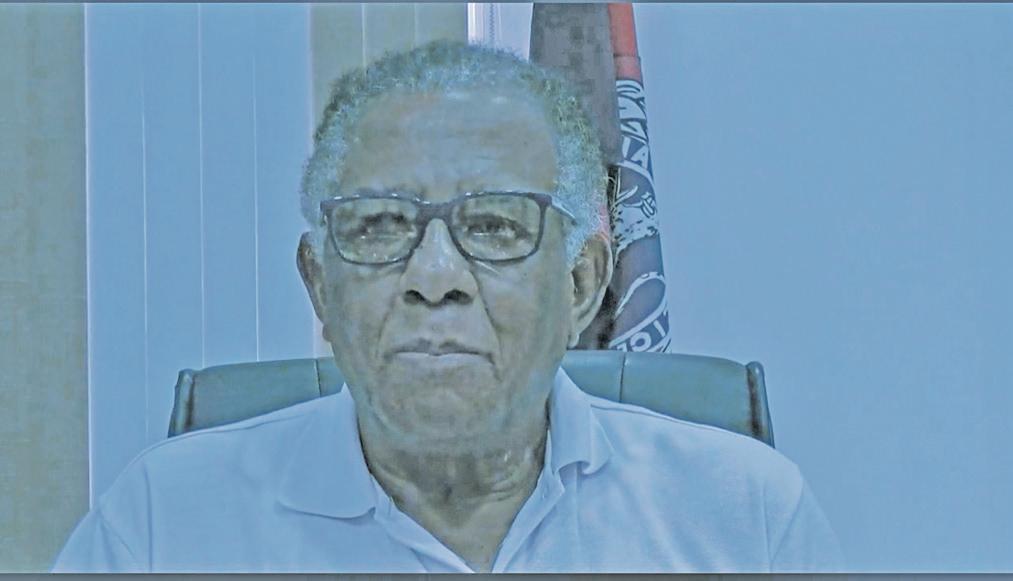
rising rate of road fatalities involving children.
Lambert made this call on Thursday during the ‘Police and You’ programme with key stakeholders in the Road Safety Council and the Guyana Police Force (GPF).
On Monday, January 2, 2023, six-month-old Devine Khan lost her life in a two-vehicle accident along the Unity Public Road, East Coast Demerara (ECD).
The child’s parents, along with the driver of the motorcar they were travelling in were also in-
jured. The other driver had claimed that he fell asleep at the wheel and lost control of his car.
At the time of the ac -
cident the child was not in a car seat, nor was she restrained.
Lambert, while highlighting the case, said that attention needs to be placed on children travelling in vehicles without a car seat.
According to the Chairman, in other developed countries, there are car safety laws to promote child passenger safety, much of which he would like to see happen in Guyana as mass infrastructure development is ongoing.
“We have to see that the enforcement is in place because we look at the developed world and we see a lot of safety features are in place….
“We would propose that there is more enforcement

where people are travelling with these babies or children, and [as it relates to] vehicles that they have a car seat or be kept restrained so that you can save their lives,” he said.
According to Section 45F of the Motor Vehicles and Road Traffic law, “Every driver of a motor vehicle which conveys a child shall cause such child to wear or be conveyed in an appropriate child restraint system.”
Additionally, a driver who contravenes this subsection commits an offence and is liable on summary conviction to a fine not exceeding $10,000.
“It makes no sense that you go through nine months to carry a child and to lose that life like that,” Lambert said in his appeal to parents.
The country’s Traffic Chief, Dennis Stephens recently said that there was a six per cent increase in road fatalities in 2022 compared to the previous year.
There were six fatal accidents involving children which occurred during the weekend hours.
Stephens said that pedestrians remain one of the “most vulnerable” groups
affected with 39 deaths recorded.
Additionally, 21 motorcyclists lost their lives in 2022, while a total of 661 motorcyclists were involved in accidents.
The Guyana Road Traffic Act does make provision for a “child restraint system” designed to diminish the risk of injury to a child in the event of a collision or abrupt deceleration of a vehicle by limiting the mobility of the child.
According to the law, the device used for securing the child should be designed “either to be fixed directly to an anchorage point or be used in conjunction with an adult seat belt and held in place by the restraining action of the belt.”
Furthermore, the device should be “fitted in the vehicle by the manufacturer and is of a type which complies with such standards as may be prescribed by the minister by regulations in respect of the shape, quality, construction, installation and assembly of seat belts and other safety belt assemblies and anchorage points and child restraint systems.”
HOUSE lot identification is ongoing at the Cummings Lodge, East Coast Demerara Housing Development, in line with a recent commitment of the Minister of Housing and Water, Collin Croal.

This is to ensure those allocated lands at the scheme can access their lands and commence construction of their homes as infrastructure works move ahead.
On Friday, some 30 moderate-income allottees were able to identify their lands with guidance from the Surveys Unit of the Central Housing and Planning Authority (CHPA).
The excited landowners and their families stated that they were satisfied with the lands and the work of the Ministry and CHPA.
Allottee, Mr Phillip Khan stated that he has been rent-
ing for some years now, and having his land now puts him in a position to provide better shelter for his family.
“I proud about the land that I got because I go through so many tribulations in life,” Mr. Khan said. He added, “I planning to build a house on it because I fed up paying rent and being
insulted.”
Another landowner at the scheme, Mr. Wynton Daniels shared, “I can finally say I’m at ease. This is mine [and] this is something that I will be able to pass on to my generations”.
Mr. Daniels also highlighted plans to begin construction as soon as possible.
THE Guyana Manufacturing and Services Association (GMSA) and NBR Cooling Systems Pvt Ltd. (NBR), on Thursday, signed a Memorandum of Understanding (MoU) at the close of the Global Investors Summit in New Delhi, India.

President of the GMSA, Rafeek Khan, signed the MoU on behalf of the association, while Director of NBR, Aarif Hussain, signed on behalf of NBR. Also present from the GMSA were board members Rosh Khan and Shyam Nokta.
The investment summit has precipitated pronounced interest in the expansion of Indian private-sector investment in Guyana, for various industries.
According to a press release from GMSA, NBR has been a part of the radiator business for over 20 years and is a well-established manufacturer of a wide array of engine radiators, radiator cores intercooler and condenser, and engine coolant.
The company is renowned for its high quality and standards and serves several industries such as automotive, generator and boring machines.

With an aim to expand its business operations and grow from being the second largest market player in cooling systems in India, NBR selected Guyana to execute the same vision globally.
As part of the MoU, the GMSA will identify and engage Guyanese companies or form consortiums to establish a manufacturing/ assembly plant in the engine cooling (automotive) sector.
The company will leverage NBR’s technological advancement, full range of high-quality raw materials and components, market resources and access to international compliance codes and practices.
During the initial stages of establishment, NBR committed to injecting an approximate sum of US$1 million.

The framework for the business will incorporate: Transfer of skills and technologies of manufacturing and assembling radiator condenser and charge air cooler
from India to Guyana; manufacturing and production of radiator condenser and charge air cooler made from aluminium, copper and brass; assembling and exporting various radiator condensers
and charge air coolers made from aluminium, copper and brass to all the countries in Latin America and United states of America; importing all the machinery and raw material required for
manufacturing of radiator condenser and charge air cooler made from aluminium copper and brass.
Khan remarked: “This collaboration will perhaps introduce a new industry
or strengthen the automotive cooling sector in Guyana and Caribbean region.
I anticipate we would see this value-added automotive component company establishing a factory this year. The company currently produces approximately 1,200 radiators per day.
Hussain added: “This MoU marks a landmark col-
laboration and will provide new growth avenues for NBR in South American region.
Since incorporating NBR, the company has attained such remarkable progress and is now pleased to expand its international manufacturing plan in collaboration with GMSA.”
MINISTER of Education Priya Manickchand has urged Christ Church Secondary School teachers to engage students online until a definitive decision is made regarding the plans for recovery after a fire destroyed the facility on Thursday.
Minister Manickchand and senior officials of the ministry, on Friday met privately with teachers and ancillary staff in the boardroom of the National Centre for Education Resource Development (NCERD).
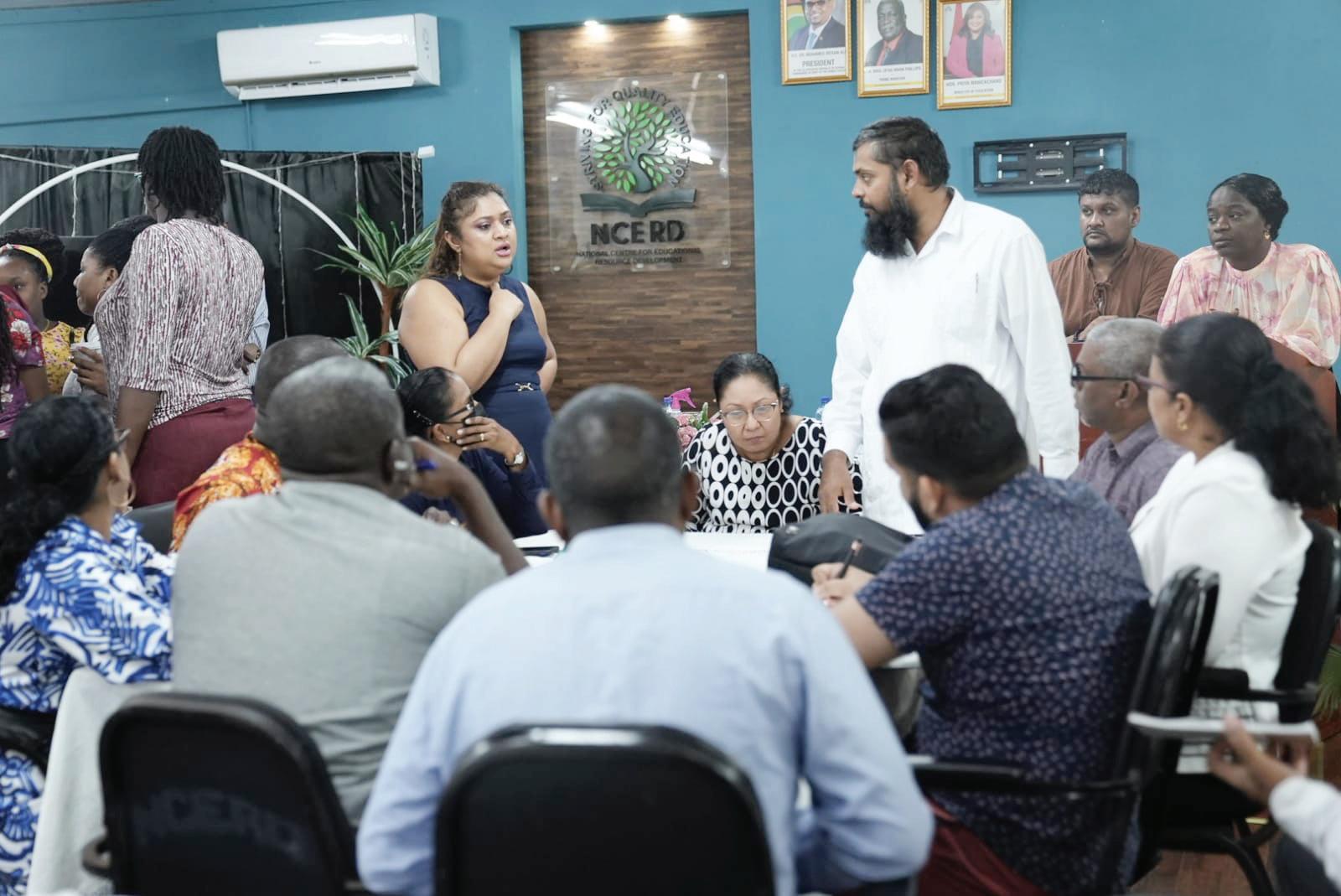
The engagement was to discuss the way forward for the students, teachers and parents, as investigations continue into the fire that ravaged the structure of the secondary school, which has a deep history of over 60 years.
It was stated in a press release: “The Ministry of Education is committed to ensuring the students, teachers and ancillary staff of Christ Church Secondary School are adequately accommodated in the shortest possible time following last [Thursday] evening’s devastating fire.”
According to the release, Minister Manick -
chand said that the List ‘A’ school has performed well over the years and commended the teachers for their dedication to raising the standard of the school.
She further said that a decision will have to be guided by what is in the best interest of the students enrolled.
The Education Minister continued by saying that the ideal preference would be to house all the students in one location.
During the meeting, various options were explored for the placement of students and teachers; however, there were no definite decisions.
Minister Manickchand said that the ministry will have to meet with the parents and students to discuss the matter further. It was also noted that the school’s enrolment records, which were saved as softcopies, will guide the process forward.
While at the scene on Thursday evening the Minister of Education said: “We have problems with SBAs. We are talking with CXC right now about what options we can have to make sure that the children whose SBAs got destroyed or their lab
books, that we could put them in the best position possible for the sitting of their exams in a few months’ time and to have them have the benefit of the work that they did.”
She went on to say: “These are blows that really could put us back, but we are already talking about where we could put these children and it’s not going to be easy, but
we’re going to try the best we can. To the students of Christ Church, I say this: let’s stand together, this is your chance to show the world, to show everyone that the fire is not going to stop you.
“Put your heads down for the next few months. Those of you who are in fifth form, those of you who are in fourth form, put your heads down, con-
centrate on your work and let’s rise up from this together because we can do it. We want you to know that you are going to get all the support that you need from us, both materially as well as emotionally.”
Christ Church Secondary School is the third school that has been destroyed by fire within the last year, and this was the
second fire within a week at the said school. The first fire took place on Wednesday, January 4, 2023, but it was successfully contained by the Guyana Fire Service.
The school housed over 500 students, 39 teachers, nine ancillary staff, a canteen, a science, food and nutrition lab and a library.

- all options being explored to find adequate accommodation in the shortest possible time, Education Minister saysEducation Minister Priya Manickchand and other officials of the ministry engage staff of the Christ Church Secondary School, on Friday
THE Vreed-en-Hoop Shore Base Inc. (VEHSI) has started installing the quay wall structure on its artificial island in the Demerara River.

Quay walls are usually earth retaining structures at which ships can dock.
Members of the project team were on hand to witness the driving of the first set of sheet piles, which marks the start of the quay wall installation. The sheet piles will help retain and stabalise the structure.
So far, the construction process remains on schedule, and additional equipment has been landed on the structure to conduct the compaction phase. There is a permanent construction presence, with work being executed on a 24-hour basis.
This new island is part of the reclaimed land that will be transformed into the estimated 44-acre mega-project to create the shorebase facility.
This facility will form part of the Port of Vreeden-Hoop. The project is currently in the sandkey reclamation and compaction phase. During this phase,
the dredger, M.V Galileo Galilei, will continue the process of adding reclaimed material to create the artificial island on which the new terminal will be con-
structed.
Additionally, machinery on the island will begin compacting the material into a more stable structure. In the first phase, this proj-
ect will add more than 44 acres to Guyana’s coastline.
Phase one of the project is meant to be the special purpose vehicle to serve as a SURF (Subsea Umbilical, Riser and Flowlines) shorebase for Esso Exploration and Production Guyana Limited (EEPGL) projects.
The project managers have warned that the site remains an active construction zone and landing on the island is prohibited. Therefore, the team urges all to remain clear of the construction zone and adhere to the previously issued notices. Construction is ongoing, and the land mass will continue to be expanded.
The project started the first step in June 2022, which entailed dredging the access channel in the Demerara River, including the deepening/widening of the existing nautical channel, berth pockets, and turning basin. The project
managers have hailed this phase a success and the upgraded channel has been handed over to the Maritime Administration Department (MARAD)

VEHSI is currently the largest Guyanese private sector investment in the oil and gas sector and is expected to cost over US$300 million.
According to the project directors, the support and encouragement given by the Government of Guyana have been reassuring and augur well for additional investment and the future of Guyana. The project is expected to become operational in 2023.
Vreed-en-Hoop Shorebase Inc. is a joint venture between NRG Holdings Inc.—a 100 per cent Guyanese-owned consortium that is the majority shareholder –and Jan De Nul, an international maritime infrastructure company headquartered in Luxembourg.










(ESPNCRICINFO) -

Suryakumar Yadav's incredible exploits in T20I cricket have propelled him into the Test arena, with the 32-year-old batter picked in a 17-member squad to play for India against Australia. The squad, picked for only the first two Tests of the four-match home series, includes another player who has made his name in the white-ball circuit. Ishan Kishan has come into the side with first-choice wicketkeeper Rishabh Pant in recovery after a car accident.
India go into the Border-Gavaskar series, starting on February 9, with the spearhead of their pace attack stuck on the sidelines. Jasprit Bumrah had, not so long ago, looked like he was ready to return to cricket after recovering from a stress reaction in his back. But in the process of getting himself used to normal workloads again, he felt stiffness in his right glute and has now been advised at least another month's rehabilitation.
Ravindra Jadeja is coming out of his own long-term injury lay-off. The left-arm spin-bowling allrounder has been picked in the squad and could have a huge role to play in a home series that India need to win 3-1 or better to be assured of a place in the World Test Championship

final. Jadeja has not played any cricket since August 2022. He was originally due to return during the tour of Bangladesh late last year, but it emerged that he needed more time to recover from a knee surgery done in September. Even now, the BCCI has noted in its press release announcing the squad that Jadeja's inclusion "is subject to fitness."
India's Test-match batting is set to receive an injection of pace should either of Kishan or Suryakumar make the XI. Both players have strike rates above 60 in firstclass cricket. But getting them in remains a challenge.
The captain Rohit Sharma, the vice-captain KL Rahul, Cheteshwar Pujara and Virat Kohli will likely
occupy the top four spots. Shreyas Iyer should slot in at No. 5 or 6 given his recent form -- he averaged 101 in India's most recent Test series, against Bangladesh in December 2022, while Shubman Gill seems the first reserve for both opening and middle-order roles. Kishan has been designated as a wicketkeeper in the squad so he will be pitted against KS Bharat, who has long been the understudy to Pant.

On the bowling front, Mohammed Shami will step up as the front man of the attack with support from Mohammed Siraj, who enjoyed a stellar debut series against Australia when India beat them on their turf in 2020-21, Jaydev Unadkat, the left-armer who recently
broke a spell of 12 years between Test matches, and Umesh Yadav. Hardik Pandya, although a regular part of India's white-ball set-up, is not part of the Test squad. It is learnt that he does not yet have the fitness to bowl long spells in red-ball cricket. R Ashwin will be the lead spinner with Jadeja, Axar Patel and Kuldeep Yadav backing him up. Changes between India's last Test squad and this one In: Rohit Sharma, Ravindra Jadeja, Mohammed Shami, Ishan Kishan, Suryakumar Yadav Out: Abhimanyu Easwaran, Rishabh Pant, Navdeep Saini, Saurabh Kumar, Shardul Thakur.
South
Irish Racing Tips
Fairyhouse
08:27 hrs Blood Destiny
09:02 hrs Splashing Out 09:37 hrs Eve Van
10:12 hrs Epson Du Houx
English
10:47 hrs Flame Bearer
11:22 hrs Jack In The Box
11:57 hrs Westport Cove
American Racing Tips
Aqueduct
(ESPNCRICINFO) - India have left Rohit Sharma and Virat Kohli out of their T20I squad for the upcoming home series against New Zealand. KL Rahul is also not in the squad, and while the BCCI put his absence - and that of Axar Patel, from both the ODI and T20I legs of the seriesdown to family commitments, it gave no specific reason for Rohit, India's regular all-format captain, and Kohli missing the series.
As a result, India's firstchoice top three from their last two T20 World Cups are now missing successive T20I series.
This may not yet have a major bearing on India's long-term future in the

format, however. Ahead of the recently concluded ODI series against Sri Lanka, Rohit said the selectors and team management had made it clear to a number of senior players that they would not be able to play all three formats over the next few months for workload-management reasons, with India building up towards the 50-overs World Cup later this year.
Hardik Pandya, who captained India in the three T20Is against Sri Lanka earlier this month, will continue to lead the side in the T20I series, which will be played in Ranchi, Lucknow and Ahmedabad from January 27 to February 1, with Suryakumar Yadav as his deputy.

Rohit and Kohli are part of the squad for the ODI series that will take place before the T20Is, from January 18 to 24 in Hyderabad, Raipur and Indore.
The T20I squad is also notable for the return of opener Prithvi Shaw, who last played for India in July 2021, and whose ab-
sence from subsequent squads - particularly in the T20 format - has been a constant source of debate, given his rare ability to provide rapid starts in the powerplay. Shaw forced himself into the reckoning earlier this week by scoring 379 off 383 balls -- the second-highest first-class score by an Indian batter for Mumbai against Assam in the Ranji Trophy.
Left-arm wrist-spinner Kuldeep Yadav, who took a Player-of-theMatch-winning 3 for 51 in the third ODI against Sri Lanka on Thursday, is also back in the T20I squad, having last featured for India in that format in August 2022. He is one of two wrist-spinners in the squad along with Yuzvendra Chahal.
Sanju Samson, who was ruled out midway through the T20I series against Sri Lanka with a knee injury, remains out of the squad -- the BCCI release did not provide an update on his fitness. Jitesh Sharma, who replaced him, remains
in the squad as one of two wicket-keeping options alongside Ishan Kishan.
Fast bowler Harshal Patel, who played only the first T20I against Sri Lanka, has been left out of the squad.
With Rahul sitting out the ODIs, India have called up the uncapped KS Bharat as a second wicketkeeper alongside Kishan. Bharat is also part of India's squad for the first two Tests against Australia in February -- he is expected to contest the lead wicketkeeper role with Kishan in the absence of regular keeper Rishabh Pant, who has undergone knee ligament surgery after suffering a serious car crash in late December.
In Axar's absence, meanwhile, the selectors have called on a like-for-like replacement in Shahbaz Ahmed - both are all-rounders who bat left-handed and bowl leftarm spin. Shahbaz has been part of the white-ball mix in recent months, and has played three ODIs, most recently in December on the tour of Bangladesh.
Also back in the squad is fast-bowling all-rounder Shardul Thakur, who was left out of the series against Sri Lanka. Leftarm quick Arshdeep Singh, who was part of the ODI squad against Sri Lanka but didn't get a chance in the starting XI, misses out -- he remains part of the T20I squad, however.
Jasprit Bumrah, who was initially named in the ODI squad against Sri Lanka before pulling out before the start of the series - he is on the road to recovery from a longterm back injury -- is not part of either white-ball squad or the squad for the first two Tests against Australia.
- Glenn Phillips produced a counterattacking masterclass to snatch the gameand with it, the seriesfrom Pakistan's grasp, clattering an unbeaten 63 off 42 balls to see New Zealand through in their chase of 281. The hosts had one hand on the series trophy when the visitors required another 76 from 71 deliveries with only four wickets in hand. Phillips, already on 16 off 8 balls at the time after pumping two sixes, sealed New Zealand's first ODI series win of at least two matches against Pakistan on their own soil with 11 balls to spare. Despite an upset stomach, Phillips cracked four fours and sixes each to dramatically turn the match in a matter of a few overs. New Zealand required 75 off the last 69 balls when he chipped Mohammad Wasim over mid-on for four, before swinging Haris Rauf for six over deep midwicket next over. And when Wasim tried the slower ball soon after, it was deposited wide of longon for six more.
As a result, New Zealand needed less than a run a ball with nine overs left, at which point Phillips belted Rauf through extra cover for four more. He brought up his fifty off 28 deliveries - New
Zealand's second-fastest against Pakistan in ODIs - in the 43rd over. And as if to stamp out the very last bit of hope Pakistan had, Mohammad Rizwan dropped Phillips next ball, failing to hold on as a short one from Usama Mir turned away and took the outside edge.
Had that been taken, New Zealand would have been left in a tricky situation, with only Mitchell Santner and the tail to get 35 runs from seven overs with three wickets in hand. The feeling of whatcould-have-been may well have lingered in the opposition's mind as they watched Phillips hit the winning runs.
New Zealand had collapsed from 160 for 2 to 205 for 6, giving Pakistan a sniff. Their chase had been set up by fifties from Kane Williamson and Devon Conway, who added 75 for the second wicket.
Conway fell for 52 after slicing to point off Agha Salman, who also had Daryl Mitchell caught in the 31st over. Williamson getting run-out for 53, and Bracewell and Tom Latham chopping on happened in quick succession, as New Zealand lost their way.
Fakhar hundred, Rizwan fifty in vain
Earlier in the day, it was an innings of three parts from Pakistan: reduced to 21 for 2, they needed Fakhar
Zaman and Rizwan to bail them out with a partnership of 153, before Salman took charge in the death. Fakhar hit 101 in an innings not typically associated with him, taking 122 deliveries to get to the mark, while Rizwan fell for a quick 77 from 74 balls. Those remained the only notable contributions from the top five, before Salman hit four fours and a six in an enterprising innings of 45. When Ish Sodhi cleaned Rizwan up with a googly in the 34th over, at least 300 looked possible but regular wickets kept the hosts in check on a surface where the ball didn't turn.

Pakistan had lost Shan Masood - playing his first ODI since March 2019 - and Babar Azam early, when Williamson reviewed a not-out decision against Masood and Latham stumped Babar for the third time in as many matches. Williamson seemed to be the only one who believed Masood had edged behind, before Babar played for the turn and lost his balance in the crease.
That meant Fakhar and Rizwan had to start from scratch. Williamson had introduced spin as early as the fifth over, with Fakhar deciding to break the shackles when he tickled and punched Santner for fours in the tenth. Overall though,
the left-hander was happy just to nudge it around while Rizwan was busier at the crease.
And once Rizwan fell in the 34th over, New Zealand's substitute fielders played a part in nearly all of the wickets to fall from there on: Henry Nichol-
ls ran Fakhar and Haris Sohail out, and caught Mir at deep midwicket and Doug Bracewell sent Salman back 45 when the batter holed out to deep square leg. As if to return the favour, it was Pakistan's substitute Tayyab Tahir, who ran Finn Allen out
to give his side a breakthrough.
But eventually, Phillips would have the final say, putting into oblivion Fakhar's century, Rizwan's attacking knock and perhaps everything else that had happened on the tour.

(BBC) - Paris St-Germain forward Lionel Messi has not been approached by Al Hilal and would not consider a move to Saudi Arabia, Spanish football expert Guillem Balague, says.
Recent reports suggest the Argentina international, 35, has been offered £245m to move to the Middle East.
Messi's contract expires in the summer but, according to Balague, he is close to finalising a deal to remain at PSG.
"There hasn't been an offer [from Al Hilal]," says Balague.
"PSG and Messi are organising a meeting in the next few weeks to finalise the deal that will
in Paris."
He said after the tournament that he planned to keep on playing for his country, while Balague says he is also determined to win more things in Europe.
"Right now, his motivation is to stay in Europe," Balague added.
"He is favourite to win the Ballon d'Or, he is still in the Champions League, he has big targets after winning the World Cup.
"Not only does it make no sense to approach him with that offer, it hasn't existed."
Messi joined PSG from Barcelona in 2021 and has made 54 appearances for the Ligue 1 side, scoring 24 goals.

(BBC) - Manchester City footballer Benjamin Mendy has been found not guilty of six counts of rape and one count of sexual assault against four young women.
The jury failed to reach verdicts on one count of rape and one of attempted rape and a retrial will take place.
Louis Saha Matturie, 41, was also found not guilty of three counts of rape against two teenagers.
Jurors at Chester Crown Court could not reach verdicts on six other counts.
Mr Mendy, 28, and his friend Mr Matturie, had been accused of raping women at the player's home in Prestbury, Cheshire, and at a Manchester flat.
Mr Mendy covered his face with both hands as the jury foreman repeated "not guilty" to the six counts.
During a six-month trial, prosecutors told the jury Mr Mendy was a "predator" who turned the pursuit of women for sex into a game.
But jurors were also told by defence lawyers that while the trial, involving money, sex and celebrity, had "all the makings of a good drama", it came with a significant "plot twist" - that the accused were innocent.
Lawyers for both men argued each allegation was "riddled with inconsistencies and flaws".
Lisa Wilding KC, representing Mr Matturie, told jurors it was "chillingly easy" to make false allegations and suggested all the women involved were in some way connected through friendships, social media or by attending parties.
Defending Mr Mendy, Eleanor Laws, KC, suggested that "regret" at having "quick, animalistic sex" was not the same as being raped.
Jurors were told not to take a "moralistic" approach to the
Benjamin Mendy was accused of luring women to his home and sexually assaulting them
defendants' sexual lifestyles.
The unanimous not guilty verdicts were delivered on Wednesday by the seven men and four women on the jury; one juror having been discharged earlier for medical reasons.
The verdicts could not be reported until jurors concluded considering the remaining two counts, after they were given a majority direction by Judge Steven Everett, meaning he would accept a 10-1 majority on any verdict.
But after 14 days of deliberation, jurors could not reach verdicts on Mr Mendy's alleged attempted rape of a woman, 29, in 2018 and the alleged rape of another woman, 24, in October 2020.
The jury failed to reach a verdict on three counts of rape and three counts of sexual assault against Mr Matturie.
Judge Everett discharged the jury on Friday, ending the trial.
Both men had been on trial since 10 August, accused by 13 women of multiple sexual offences.
Lockdown-busting parties were held both at Mr Mendy's home and an apartment he rented on Chapel Street near Manchester city centre, the court heard.

THE Guyana Football Federation (GFF)/Tiger Rentals under-13 football tournament continues this morning from 10:30hrs at the National Training Centre, Providence, with four matches.
This will be day two of the nation-wide competition that will see club teams and Academy Training Centres (ATC) going head to head for top hours in this first for Guyana’s football.
The fixtures for today will see East Bank matching skills with Bartica in the first match which will be
played simultaneously with West Demerara versus West Berbice.
The other two simultaneous matches will see Georgetown playing against East Coast while Upper Demerara will be pitted against East Berbice.
East Berbice had trampled Diamond United 6-1 on match day one and they will surely be looking to continue their good form. The other winners from the opening round included Fruta Conquerors, coached by Golden Jaguar’s Jeremy Garrett, who defeated Timehri Panthers
5-2.
Meanwhile, Upper Demerara had defeated West Berbice 2-0; Georgetown ATC edged Region Six ATC 2-1 while West Demerara ATC triumphed over East Bank ATC 3-1.
Last Saturday, the East Bank Football Association (EBFA) kicked off their inter-association tournament with two matches at the NTC.
Diamond United beat Agricola Red triangle 4-3 while Timehri A team beat Herstelling Raiders 8-0.
CMC – West Indies all-rounders Kyle
and
Paul struck cameos at opposite ends of the innings to seal a tricky run chase for Durban Super Giants in a five-wicket win over MI Cape Town Friday.
In pursuit of 153 for victory at Newlands, Super Giants got over the line with 21 balls to spare, the left-handed Mayers top-scoring with 34 from 23 balls at the top of the order.
When three wickets tumbled for 12 runs in the space of 13 balls to leave the innings stumbling on 130 for five midway during the 15th over, Paul arrived to smack three sixes in an eight-ball unbeaten 20, posting 24 in an unbroken sixth wicket stand with West Indies teammate Jason Holder (11 not out).
Earlier, Mayers and Holder finished with a wicket apiece as the hosts gathered 152 for eight from their 20 overs after being sent in.
Grant Roelofsen, a
26-year-old South African right-hander, top-scored with 52 from 44 balls with four fours and a six while George Linde lashed 33 from 25 balls and Delano Potgieter, a dashing 11-ball 25 at number nine.
In reply, Mayers provided a flying start to the innings for Super Giants, belting four

fours and two sixes first in a 35-run, first wicket stand with Quinton de Kock (11) and then in a 27-run, second wicket partnership with Wiaan Mulder who punched 30 from 26 deliveries.
Heinrich Klaasen chipped in with 36 from 22 deliveries to inspire a 56-run, third wicket stand with Mulder
before Paul erased any doubt over the result with his lusty hitting towards the end.
At Boland Park in Paarl, West Indies pacers Alzarri Joseph and Romario Shepherd had little impact as their Joburg Super Kings failed to defend a paltry 81 in a seven-wicket loss to Paarl Royals.
She
The World Anti-Doping Agency (Wada)
it
concerned by the finding and may appeal against the decision.
Valieva, then 15, was allowed to compete at the Beijing Winter Olympics despite a failed drugs test.

Rusada said in November it had no intention of releasing the results of its doping investigation into Valieva “in order to protect the interests of the figure skater”.
However, Wada - which had been seeking a four-year ban for the athlete - released the findings on Friday after being informed of the decision by Rusada.
It said it had “requested a copy of the full reasoned decision, which it will review together with the case file in order to determine whether the ruling is in line with the terms of the World Anti-Doping Code.
“However, based on the elements of the case with which Wada is already familiar, the agency is concerned by the finding of ‘no fault or negligence’ and will not hesitate to exercise its right of appeal to the Court of Arbitration for Sport, as appropriate,” Wada added.
(BBC) - A company which looks after Usain Bolt's investments is under investigation after reports he may have lost millions of dollars to fraud.
Jamaica's Financial Services Commission (FSC) has placed the firm, Stocks and Securities Limited (SSL), in "enhanced oversight" following the allegations.
The 36-year-old
retired sprinter had investments with SSL for over a decade.
Bolt's manager, Nugent Walker, told the Jamaica Gleaner the eight-time Olympic champion had noticed "discrepancies".
The Gleaner report alleged millions of dollars were missing from the account.
The FSC said it was "aware of reports of allegations of fraud"
and that the oversight process would allow it to see the movement of funds and securities into and out of SSL.
"The FSC will simultaneously continue its investigations into matters related to SSL," it added.
SSL said its own internal investigations suggest a former employee was behind the alleged fraud and added it had "referred the matter to the rele-
vant law enforcement authorities".
Bolt retired from athletics in 2017 after winning 11 World Championship gold medals and eight Olympic gold medals.
During the 2008 Beijing Olympics, Bolt set new world records for the 100m and 200m sprint.
His 100m time of 9.572 seconds remains the world record.
Valieva failed a drugs test in December 2021 when she tested positive for banned heart medication trimetazidine.
Details of the result only surfaced after she had won gold in the team event at the Beijing Games in February - during which she became the first woman to land a quadruple jump at a Winter Olympics.
She was allowed to compete in the women’s singles event after a court lifted her provisional ban.
However, a number of falls and stumbles meant she dropped from first to fourth place, which saw her leave the arena in tears.
Travis Tygart, CEO of the US Anti-Doping Agency (Usada), has called on Wada and skating’s governing body the International Skating Union (ISU) to appeal against the decision “for the sake of the credibility of the anti-doping system and the rights of all athletes”.
“The world can’t possibly accept this self-serving decision by Rusada, which in the recent past has been a key instrument of Russia’s state-sponsored doping fraud and is non-compliant,” he added.
“Justice demands a full, fair, public hearing outside of Russia.”



